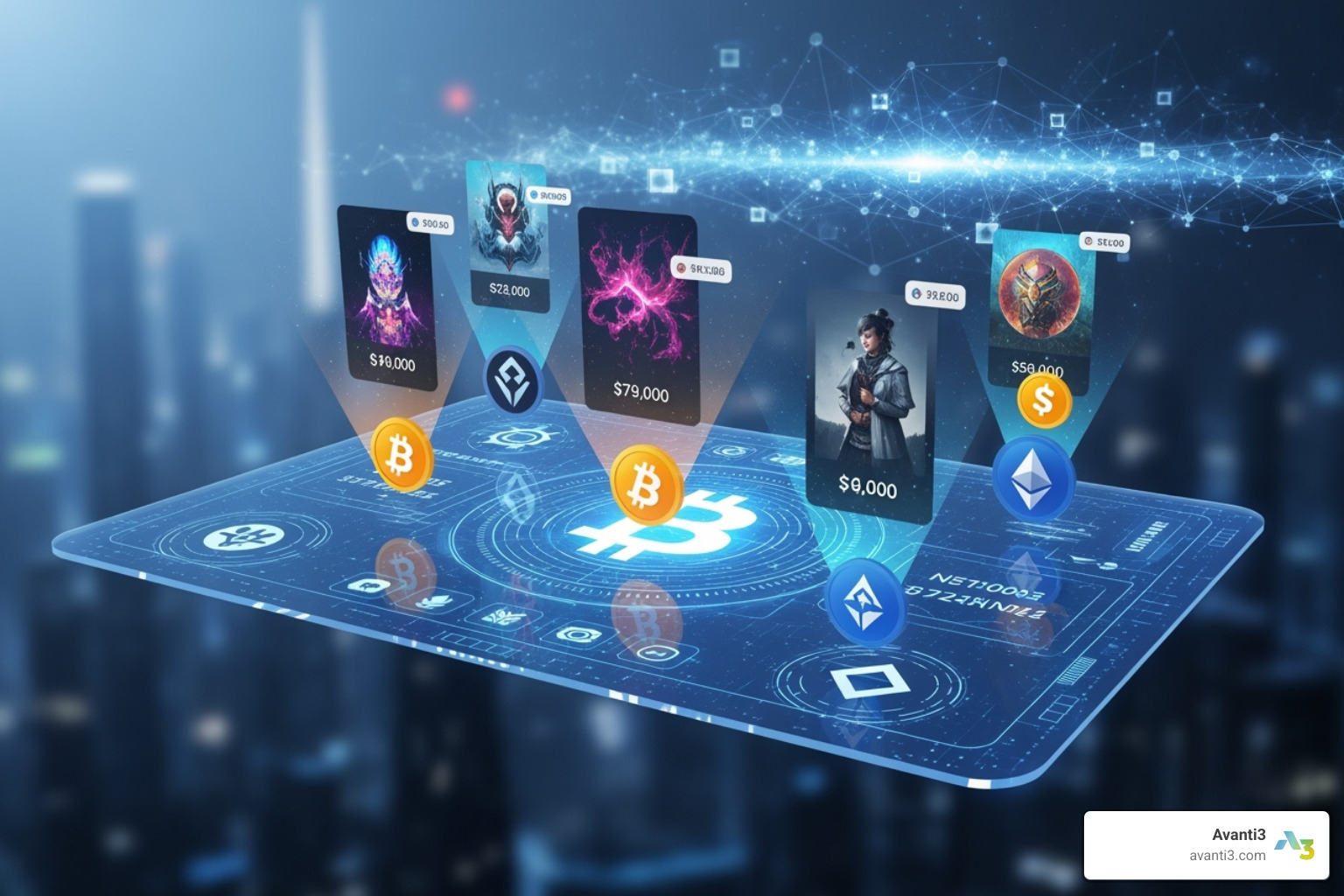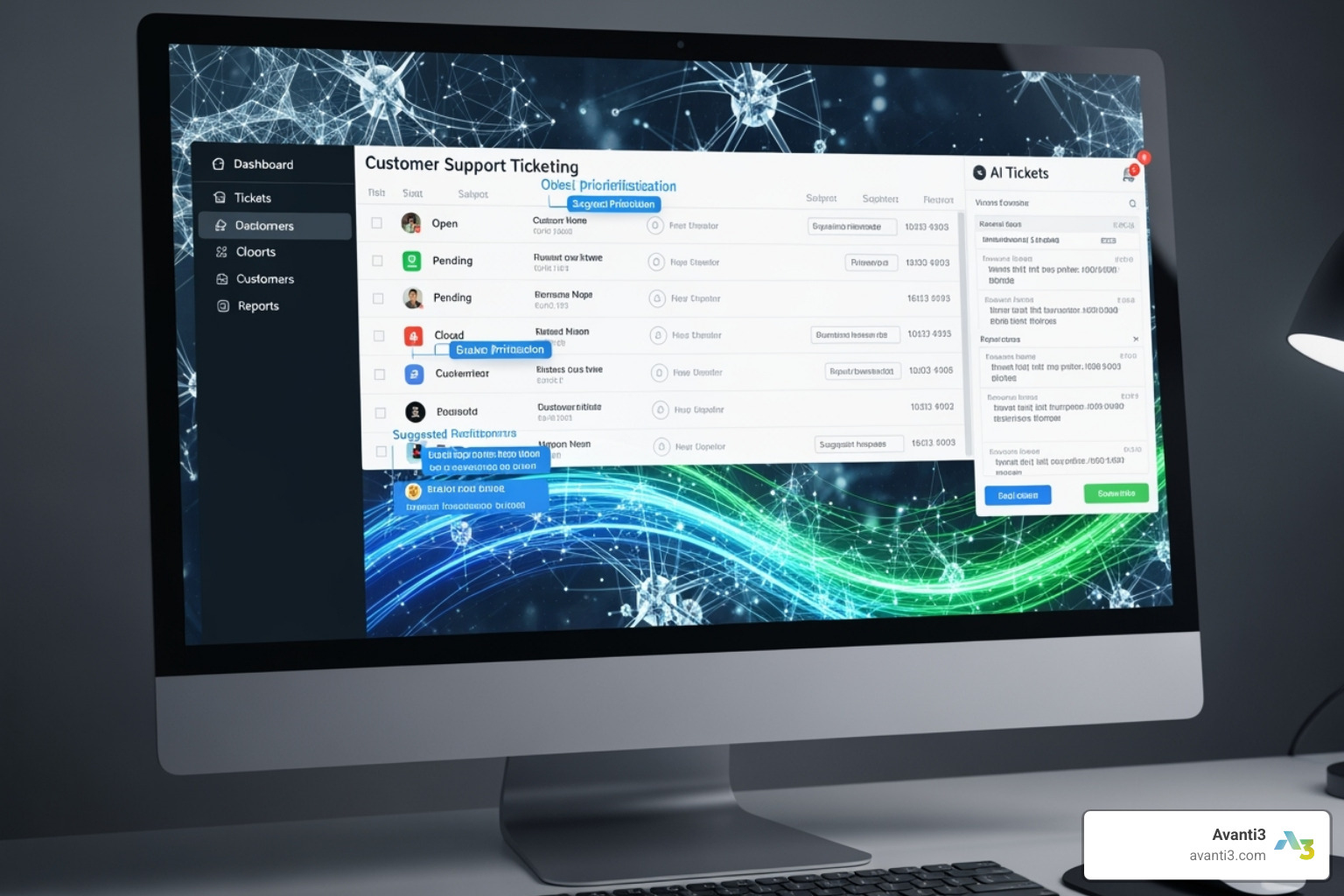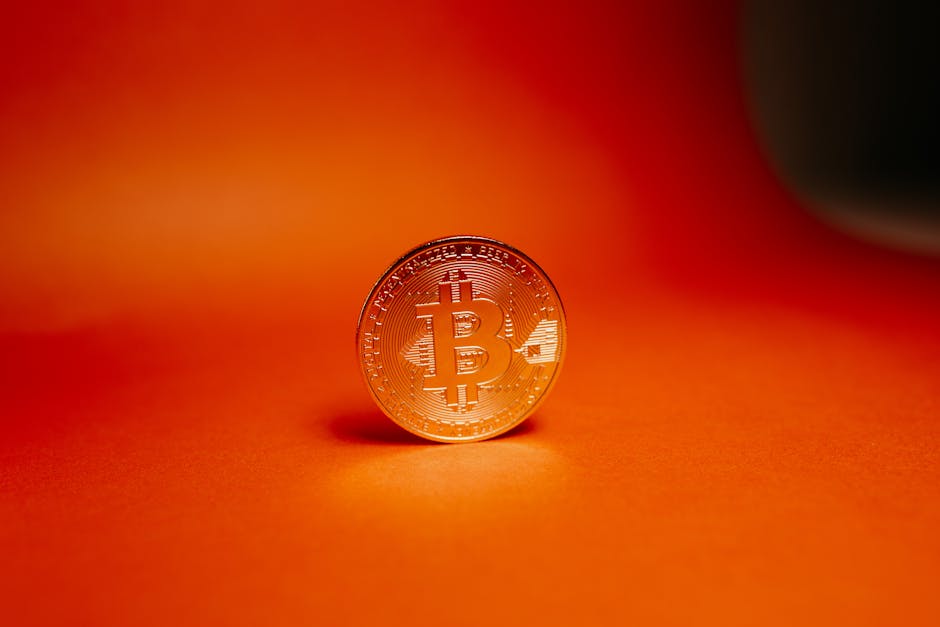NFT Marketplace 2025: Ultimate Guide
The Expanding Universe of NFT Marketplaces
An nft marketplace is a digital platform where users can buy, sell, and trade non-fungible tokens (NFTs)—unique digital assets secured on a blockchain. The ecosystem has exploded into a diverse universe of specialized platforms, each serving different needs, from massive general marketplaces to professional trading tools.
Top NFT Marketplaces by Category:
- General Trading: Broad, open marketplaces with a wide variety of collections
- Professional Traders: Platforms offering advanced tools and real-time data
- Art-Focused: Curated environments emphasizing high-quality digital art
- Gaming NFTs: Marketplaces centered on in-game assets and collectibles
- Cross-Chain: Platforms supporting or aggregating across multiple blockchains
What makes this space exciting is how platforms cater to specific communities. Curated art-focused marketplaces prioritize high-quality digital art, while others span multiple blockchains like Solana, Bitcoin, and Ethereum. The technology is also evolving with Layer 2 solutions for faster, cheaper transactions and cross-chain compatibility.
I’m Samir ElKamouny AV, and through my work scaling businesses and exploring Web3 innovations, I’ve seen how the right nft marketplace can transform creator monetization and community engagement. These platforms are the town squares of the digital economy, acting as vital bridges between creators and collectors.
In the Web3 ecosystem, nft marketplaces are pivotal. They champion true digital ownership, moving assets from centralized servers to individual users, secured by blockchain. This shift grants creators unprecedented control and offers collectors verifiable provenance. The core role of a marketplace is to simplify buying and selling NFTs, combining a gallery with an auction house to facilitate secure transactions and record every transfer on the blockchain.
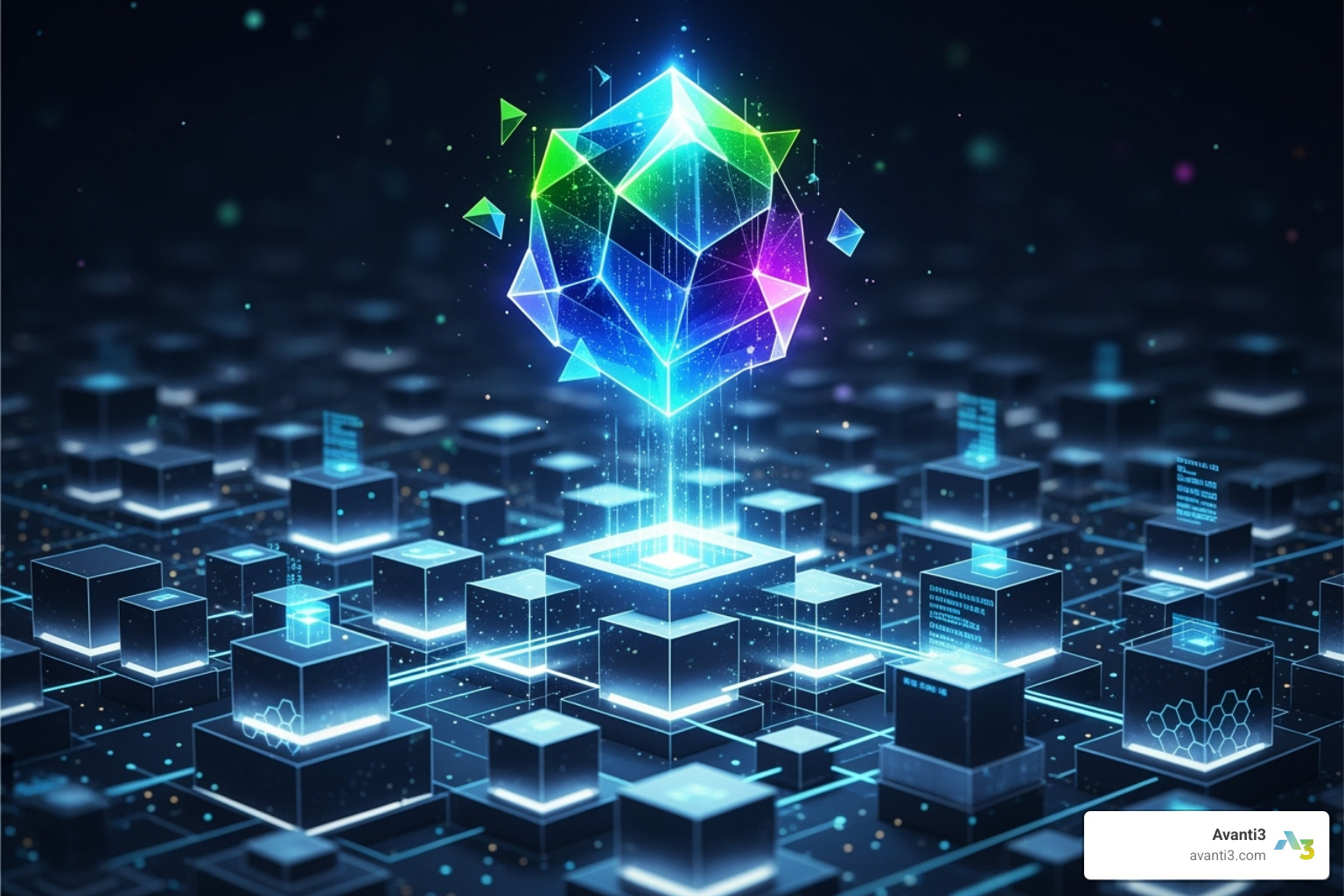
An nft marketplace is where the magic of digital ownership comes alive.
Digital ownership via NFTs is a cornerstone of Web3. Unlike traditional digital files, an NFT represents a unique, verifiable claim of ownership over a digital item, all recorded on an immutable blockchain ledger. At Avanti3, we empower creators and brands to harness this power, offering customizable engagement tools and fintech solutions to make these unique digital experiences thrive.
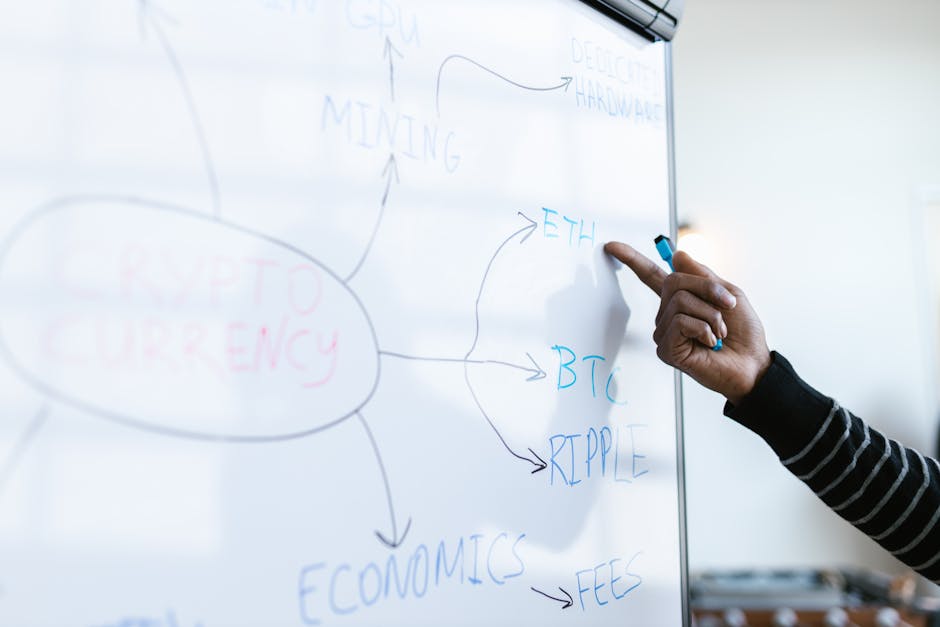
Here’s a simplified look at how buying and selling an NFT on a marketplace typically works, from connecting your wallet to confirming the transaction.
Understanding NFT Marketplace Types and Features
The nft marketplace world is diverse, with different platforms serving unique communities. Understanding their differences is key to finding the right fit.
- Aggregator Marketplaces: These are comparison shopping centers that scan multiple marketplaces to show you the best available prices across the ecosystem.
- Curated Marketplaces: Like exclusive art galleries, these platforms are highly selective, often requiring artists to apply. This approach focuses on quality.
- Pro-Trader Marketplaces: For those who treat NFT trading seriously, these platforms offer advanced tools, real-time data, and features designed for high-frequency users.
- Multi-Chain Marketplaces: As the ecosystem expands beyond Ethereum, some platforms support an impressive array of blockchains, including Solana, Bitcoin, and Polygon.
- Niche Marketplaces: These platforms serve specific communities, such as those focused on gaming NFTs or Bitcoin-based assets.
When evaluating platforms, key metrics include trading volume (liquidity), the number of active traders (community size), average transaction prices (target market), and blockchain support (accessibility).
For creators looking to understand how these platforms fit into the broader Web3 landscape, exploring Web3 creator platforms provides valuable additional context.
| Marketplace Type | Supported Blockchains (Examples) | Typical Fee Structure | Primary User Base |
|---|---|---|---|
| Aggregator | Multi-chain (Ethereum, Solana, etc.) | Varies, often low | Price-conscious buyers, traders |
| Curated | Ethereum, Tezos | Higher, exclusive | Art collectors, premium artists |
| Pro-Trader | Ethereum, Solana | Competitive, volume-based | High-frequency traders |
| Multi-Chain | Ethereum, Solana, Bitcoin, Polygon, etc. | Varies by chain | Diverse, cross-chain collectors |
| Niche | Specific to niche (e.g., Bitcoin) | Varies | Enthusiasts of specific content |
Essential Features of Modern NFT Marketplaces
The best nft marketplaces are comprehensive ecosystems with features that make digital asset trading accessible, secure, and enjoyable.
Creator tools have become highly sophisticated, empowering artists to create, manage, and distribute NFTs with ease. Features often include streamlined minting, metadata control, multi-chain distribution, and even no-code tools for deploying collections without technical expertise.
For collectors, the focus is on findy. Advanced search filters, sorting options, and detailed analytics dashboards help users steer vast collections and make informed decisions based on market trends and collection traits.
Curation remains crucial on art-focused platforms, which use rigorous selection processes to ensure high artistic standards, helping collectors find premium, vetted artwork.
Programmable royalties are a feature, allowing creators to earn a percentage from secondary sales of their work. This creates ongoing income streams for artists.
Understanding the authenticity aspects of digital art becomes crucial here – you can learn more about blockchain art authentication and how it protects both creators and collectors.
Gamification and community rewards are changing user engagement. Marketplaces are integrating games, staking rewards, and loyalty missions to create more interactive and sticky experiences that go beyond simple transactions.
Many platforms now offer aggregation capabilities, pulling listings from multiple sources to give users a comprehensive market view and better pricing options. Analytics dashboards provide a wealth of data on trading volumes, floor prices, and trader activity, empowering users to make data-driven decisions.
For creators interested in how digital art sales are evolving, exploring NFT digital art sales provides valuable market insights.

A well-designed analytics dashboard on an nft marketplace can be a treasure trove of insights for collectors and traders.
How to Effectively Use an NFT Marketplace
Navigating an nft marketplace is simple once you know the basics. Here’s how to get started.
First, set up and connect your wallet. A cryptocurrency wallet (like MetaMask or Phantom) is your digital passport, storing your crypto and NFTs. Connecting it to a marketplace is usually a simple one-click process that allows the platform to securely process your transactions.
Next, browse and filter. Marketplaces offer powerful search and filtering tools. You can filter by price, availability (e.g., “Buy Now” or “Auction”), rarity traits, and blockchain to narrow down the vast selection and find exactly what you’re looking for.
When you find an NFT you like, you can bid, buy, or list. “Buy Now” lets you purchase instantly at a fixed price. “Make an Offer” allows you to negotiate. For auctions, you place competitive bids. To sell, you list your NFT from your connected wallet, set a price or auction format, and define any royalties.
Safety and due diligence are crucial. Always verify links to avoid phishing scams. Research projects by checking their community engagement and roadmap. Finally, manage your wallet securely by never sharing your seed phrase or private keys.
For creators interested in building deeper connections with their communities, exploring NFT engagement tools can provide valuable insights.
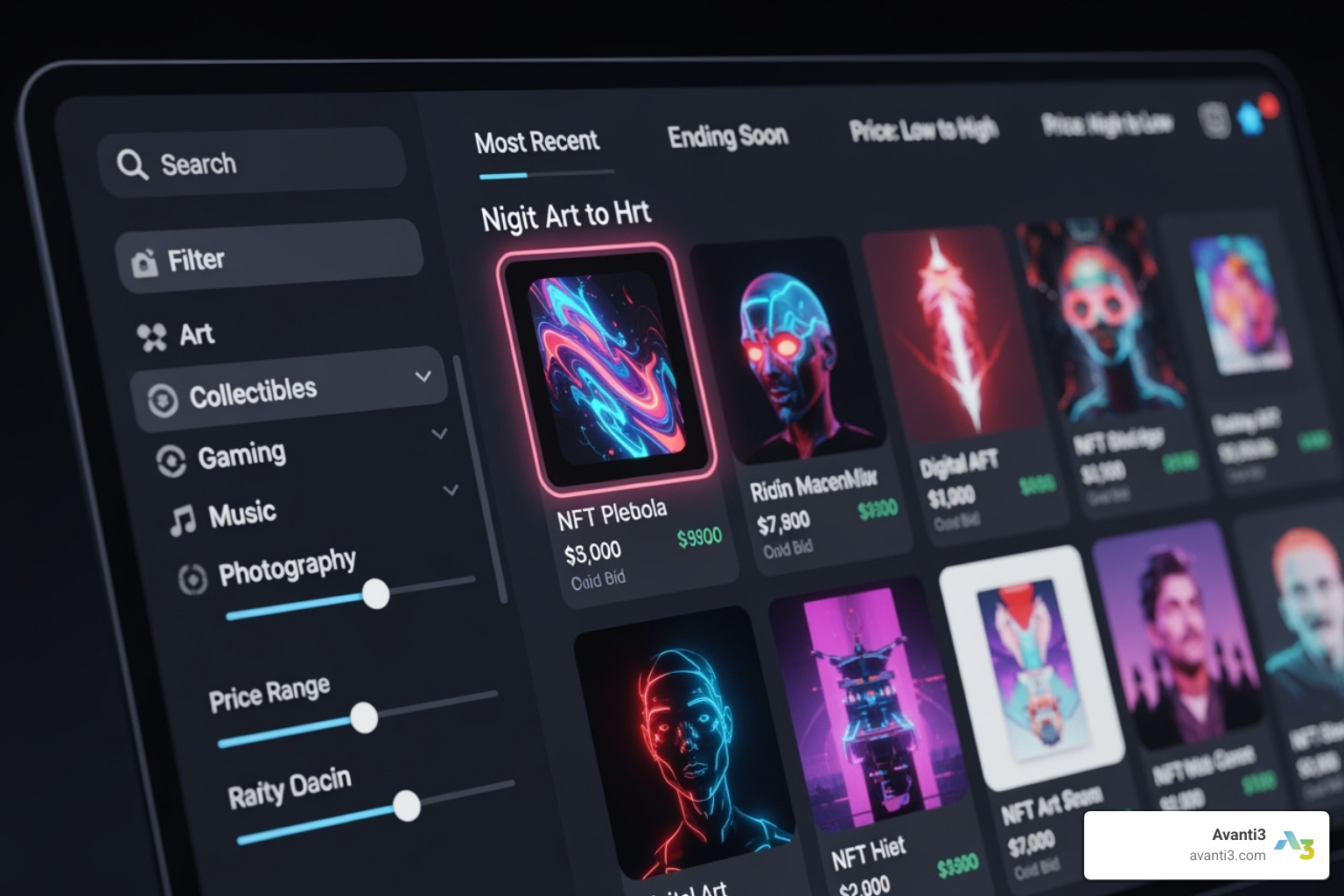
Filtering and sorting options are your best friends when navigating the vast selection on an nft marketplace.
Understanding the Risks and Rewards
Exploring nft marketplaces offers incredible opportunities but also requires awareness of the associated risks.
The primary challenges include:
- Market Volatility: NFT prices can fluctuate dramatically based on market trends and hype.
- Gas Fees: Transaction fees on blockchains like Ethereum can be high, especially during peak times.
- Security Risks: While blockchains are secure, users must watch out for phishing scams, smart contract vulnerabilities, and wallet compromises. Learning about platform bug bounties shows how platforms proactively address these concerns.
- Illiquidity: Niche or less popular NFTs can be difficult to sell quickly.
Despite these challenges, the rewards are compelling:
- Community Building: NFTs create passionate communities, often granting owners access to exclusive groups and events.
- Supporting Creators: Purchasing NFTs is a direct way to support artists and creators, enabling them to monetize their work innovatively.
- Digital Identity: NFTs are becoming key markers of digital identity and status within online communities and metaverses.
- Innovation and Access: The space offers early access to new projects, technologies, and unique digital experiences.
- Digital Reward Systems: NFTs are increasingly integrated into sophisticated loyalty and engagement programs. Exploring digital reward systems reveals how brands are leveraging these technologies.
By balancing these risks and rewards, participants can steer the ecosystem confidently.
The Future of the NFT Marketplace Landscape
The nft marketplace ecosystem is evolving at breakneck speed, with several key trends shaping its future.
Multi-chain and cross-chain support is becoming standard. Interoperability across marketplaces increases liquidity and accessibility by breaking down blockchain silos.
Layer 2 solutions are tackling high gas fees and slow transactions on networks like Ethereum. These scaling solutions make NFT trading faster and more affordable for a broader audience.
Bitcoin NFTs (Ordinals) have emerged as a major trend, with marketplaces quickly adapting to bring digital assets to the world’s oldest blockchain.
Gamified experiences and loyalty programs are turning marketplaces into engaging community hubs. Features like staking rewards and interactive missions create sticky experiences that foster long-term user engagement.
Dynamic NFTs represent an exciting frontier. These are digital assets that can evolve based on real-world events or user interactions, opening up new possibilities for interactive art and collectibles. This technology extends into immersive experiences, which you can explore further through augmented reality NFTs.

The concept of a dynamic NFT illustrates how digital assets can evolve and change, adding new layers of interaction and value.
These innovations point to a future where NFT marketplaces are more accessible, efficient, and interactive, creating meaningful experiences that bring communities together.
Conclusion: Finding Your Place in the Web3 Ecosystem
We’ve journeyed through the vibrant world of nft marketplaces, from broad, general platforms to highly curated digital art galleries. The beauty of this ecosystem is its diversity—there is no one-size-fits-all solution.
Your perfect nft marketplace depends on your goals:
- Creators should seek platforms with strong creation tools, fair royalty systems, and supportive communities.
- Collectors need rich findy tools, detailed analytics, and access to diverse collections across multiple blockchains.
- Traders require speed, efficiency, real-time data, and high liquidity to capitalize on market opportunities.
- Beginners can find welcoming platforms with intuitive interfaces to guide their first steps into Web3.
The future is heading toward dynamic NFTs, seamless cross-chain trading, and sophisticated reward systems that add genuine value. Most thrilling is how customizable the space is becoming. Creators and brands are no longer limited to generic solutions; they can now shape their own unique digital environments.
At Avanti3, we are passionate about this customizable future. We believe every creator and brand deserves tools that perfectly match their vision, from innovative engagement features to custom digital experiences that set new standards for fan interaction and monetization.
For brands and creators looking to build their own unique digital environments, exploring a custom NFT marketplace development solution offers unparalleled control and engagement opportunities.
The nft marketplace landscape is maturing into something truly special. Whether you’re an artist, collector, or brand, there’s a place for you in this expanding universe. The future is bright, customizable, and waiting for you to make your mark.

